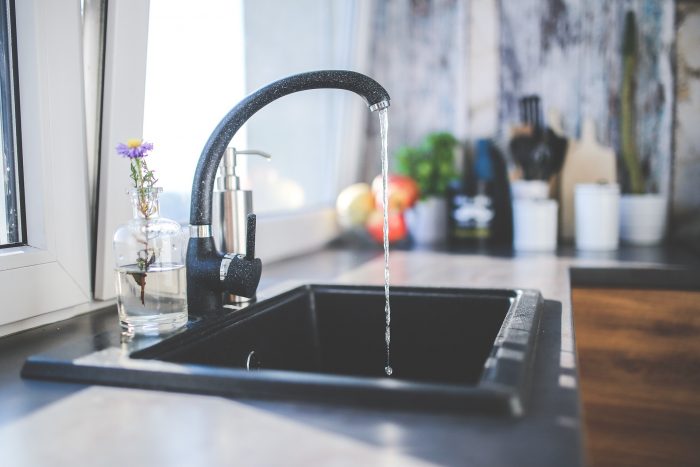Between You and Me: Water, water everywhere, but will we have enough to drink?
By Leah S. Dunaief

The other day, I went to the kitchen sink for some water, and when I turned on the faucet, only a few drops came out, then nothing. Puzzled, I tried it again, shutting then opening the tap. No water. My first thought was that something might be wrong with the pipes in the house. Zipping around, I tried the bathroom sinks. Same result. The water line into the house looked intact, no leaks. This was going to be a big problem, I worried, worse than when the electricity cuts out. I had an awful feeling of deprivation. Where was our water?
It turned out that there was a major leak in the underground water line to our block. Before too long, the Suffolk County Water Authority workers arrived and began digging up the blacktop. It was during those high heat days, and soon the men were drenched in their own sweat, but I admired their work ethic. They kept at the job for a full 12 hours until the line was repaired. We deeply appreciated them and let them know.
I also had a new perspective on having water. We turn the handle and expect to have water to drink, to cook, to clean, to bathe. Yes, I have traveled in other countries where I had to drink bottled water, but nonetheless, water came out of the taps. I follow the news about water shortages around the world, including in our country, but it is with a different perspective now when I see such reports on television. We feel entitled to running water, but we are so privileged. To turn on the faucet and have nothing come out, even for a few hours, is deeply unsettling.
Here is an example where water is a great concern. We know there has been a drought in California for the past two years. Southern California cities have prepared for the worst by building aqueducts and reservoirs and storing water underground. Despite their more arid climate, the south of the state is prepared. Smaller northern California towns, located in what was a more rainy climate, and much loved by tourists, are caught short. Reservoirs there are at worrisome levels and even power-generating dams have had to stop producing electricity because of insufficient water. These are agricultural areas too, and farmers, as well as restaurateurs and innkeepers, are afraid they may have to shut down. To truck in water costs 20 to 45 cents a gallon compared with the typical utility company rate of less than a penny a gallon.
Further, the level of water in the Colorado River and Lake Mead, which is formed by the Hoover Dam, is falling, threatening the water supply for Arizona, New Mexico and Nevada residents and especially Arizona’s agricultural output. Even major semiconductor manufacturers, expanding there, require a lot of water to produce their much needed product. Lake Mead, the country’s largest reservoir, is now at its lowest level ever. The $1 trillion package just passed by the Senate does include water shortage mitigation funds.
Worldwide, over a billion people lack access to water and 2.7 billion find water scarce for at least one month a year. Countries most affected include Egypt, Syria, Somalia, Pakistan, Haiti, Laos, Cambodia, Ethiopia and Afghanistan. The irony is that over 70 % of the earth is covered by water. Desalination, which is an expensive option, could become a solution. There is also water in the air. An Israeli company called, Watergen. pulls water from the air, as much as 6000 liters a day. that is used to support entire hospitals in Gaza and rural villages in central Africa. It also helped Australia battle bush fires in 2020. Further, harvesting the pure water from icebergs is big business along Canada’s east coast.
These are all possible solutions. Perhaps most important is the care we humans must take with our precious supply, not to mindlessly pollute or overuse what we are grateful to have. I am duly reminded how lucky we are.







